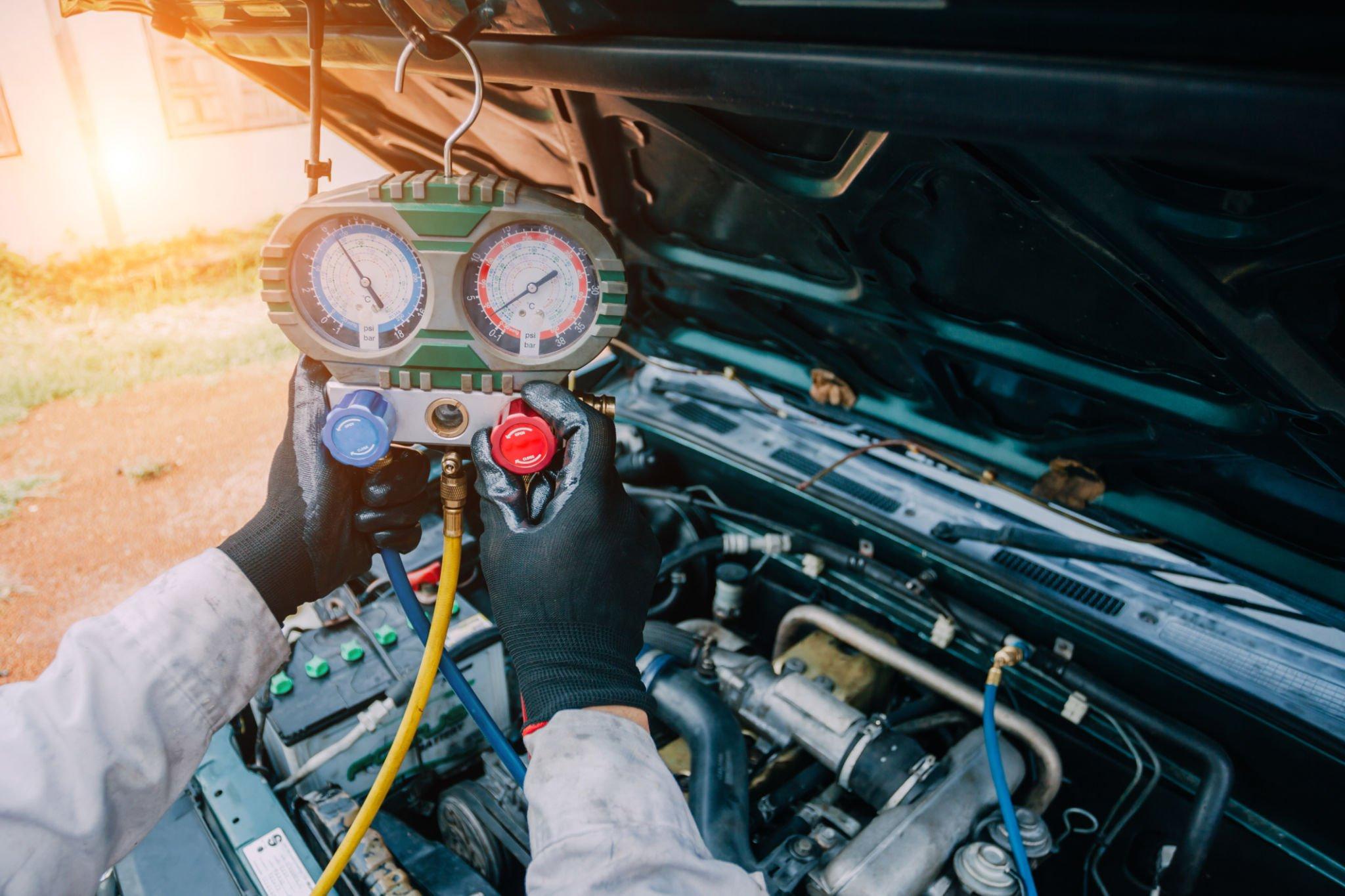Car maintenance is one of life’s most important jobs for car owners. Your vehicle, as a constant companion on your trips, demands routine care. And the cooling system is one of the crucial factors to consider. The cooling system plays a crucial role in maintaining the engine’s temperature, preventing overheating, and ensuring optimal performance. A cooling system pressure tester is also known as a radiator pressure tester or a coolant pressure tester. It’s a vital tool used to diagnose and identify potential issues within a vehicle’s cooling system. In this blog, we’ll delve into the inner workings of a cooling system pressure tester and how it contributes to the overall health of your vehicle.
So, let’s begin.
Why You Need to Use a Cooling System Pressure Tester?
Over time, various issues can arise within the cooling system. These issues include leaks, a damaged radiator, malfunctioning water pumps, or a blown-out gasket. If left unaddressed, these issues can lead to overheating, reduced efficiency, and potential damage to the engine. This is where the cooling system pressure tester comes into play.
How Does the Cooling System Pressure Tester Work?
The cooling system pressure tester operates on a simple yet effective principle. It stimulates the conditions of the cooling system when it’s under pressure, allowing mechanics and vehicle owners to identify the leaks and weaknesses in the system.
Here’s how it works:
1. Cooling System Pressurization
A hand pump or an attaching connection to an external air supply is included with the pressure tester. This supply of air is utilized to pressurize the cooling system. As a result, the testing simulates the circumstances that exist when the engine is operating, and the cooling system is under pressure.
2. Observing Pressure Hold
Once the cooling system is pressurized, the next step is to observe the pressure hold. You need to check whether the pressure holds steady or not. If there’s a drop in the pressure, it indicates the presence of the leakage in the system. Leaks can occur anywhere, such as in a faulty water pump, damaged hoses, cracked radiator, and a compromised head gasket.
3. Visual Inspection
As the pressure tester identifies the leaks in the system, mechanics can conduct a visual inspection. They can check the thermostat hoses, radiators, and water pumps to identify any faults in the system.
4. Radiator Cap Test
The radiator is another important component that needs to hold the pressure correctly. With the help of the tester, you can check if the caps are functioning properly or if it’s causing the pressure to escape, leading to inefficiencies in the system.
5. Combustions Leak Detection
With the usage of the pressure tester, you can also check the internal leaks with the help of the blown head gasket or cracked engine block. Some advanced pressure testers come with combustion leak detection to diagnose such issues.
The Benefits of Cooling System Pressure Tester
Beyond diagnosing problems, a pressure tester has many other advantages. Let’s look at some of the benefits of this invaluable equipment for auto maintenance.
1. Early Issue Prevention and Detection
Pressure testers enable you to detect issues such as leakage, weak points, and potential failures in the cooling system. Through identification of the problems at an early stage, you can take preventive measures and address them before they escalate into major and more expensive issues.
2. Improve Engine Performance
A properly functioning system contributes to optimal engine performance. By recognizing and rectifying the problems in the cooling system, you’re maintaining the engine’s ability to operate at its best. It can also improve your fuel efficiency and overall driving experience.
3. Enhance Engine Longevity
Overheating and cooling system failures can often cause irreversible damage to the engine. A pressure tester helps maintain the engine’s health, potentially extending its lifespan and reducing the need for a complete engine replacement.
4. Preservation of Resale Value
Regular maintenance, backed by using the pressure tester, can help preserve your vehicle’s resale value. A well-maintained cooling system is a positive indicator of the overall vehicle care. It makes your car more appealing to potential buyers when you decide to sell or trade in your vehicle.
5. Optimal Coolant Mixtures
A pressure tester can help you ensure your coolant mixture is at the right concentration. One wrong mixture of water or antifreeze can lead to poor heat transfer and cause freezing or boiling in extreme temperatures.
6. Support Engine Performance Maintenance
If you’re interested in making performance modifications to your vehicle, a proper and well-functioning cooling system is crucial. A cooling system pressure tester kit can help ensure your engine can handle increased power output without any overheating issues.
7. Avoid Emergency Repair
Breakdowns due to the cooling system can often lead to emergency repairs, which can be expensive and inconvenient. By consistently pressure testing your cooling system, you can reduce the likelihood of sudden failures and urgent repairs.
8. Prevent Engine Wear
A cooling system operating at optimal pressure and temperature prevents excessive wear on engine components. Overheating can lead to the distorting of engine parts, but a pressure-tested cooling system helps avoid such damage.
9. Cost Saving
Detecting and resolving cooling system problems early can save you significant amounts of money. The cost of repairing or replacing minor leaks or component failures can be a fraction of the cost of major engine repairs that are caused by negligence or failure of a component.
Cooling System Pressure Tester Adapters
Cooling system pressure tester adapters are essential components that enable the tester to connect to the different types of cooling system configurations. Since various vehicle models have unique radiator caps, filler necks, and connections, having a diverse set of adaptors ensures that pressure tester can be used on a wide range of vehicles.
Here’s why these adaptors are important:
1. Versatility
Cooling system pressure tester adapters come in various sizes and shapes to match different radiator caps and filler necks. This versatility allows mechanics and vehicle owners to perform accurate pressure tests on a wide variety of vehicles, ensuring comprehensive diagnostic capabilities.
2. Compatibility
Without the right adaptor, the pressure tester might not be able to create a connective seal, leading to inaccurate pressure readings. Adaptors ensure the compatibility between the pressure tester and cooling system.
3. Convenience
Having a collection of cooling system pressure tester adapters eliminates the need to search for specific ones. This saves valuable time during diagnostics and maintenance, increasing efficiency in the garage.
Stant Cooling System Pressure Tester
Stant cooling system pressure testers and vacuum refill kits are widely used products in the automotive industry. Stant is a renowned manufacturer of cooling systems and testing tools.
Let’s take a closer look at the features of the Stant cooling system pressure tester.
1. Quality Brand
Stant is known for producing high-quality automotive tools, and their cooling system pressure tester is no exception. This product is made of a durable material able to withstand the rigors of regular use.
2. Accurate Readings
The Stant pressure tester provides accurate readings, ensuring reliable diagnostics of the cooling system problems.
3. Easy-to-Read Gauge
The pressure gauge on Stant pressure testers typically features clear markings for easy pressure reading. It helps mechanics and vehicle owners quickly interpret the pressure levels in the cooling system.
4. Integrated Hand Pump
The Stant pressure tester often features an integrated hand pump. The pump allows you to pressurize the cooling system without needing an external air source, making the testing process more convenient.
Before You Leave
Pressure tester is a valuable tool in the world of automotive diagnostics and repairs. Detecting leaks, weaknesses, and malfunctions within the cooling system contributes to the longevity and efficiency of the vehicle’s engine.
By using a pressure tester and maintaining the car regularly, you can prevent catastrophic engine failure, ensuring a smooth and reliable driving experience. Whether you’re a professional mechanic or a vehicle owner, understanding how this tool works can empower you to take proactive steps in maintaining the health of your vehicle’s cooling system.
Professional help is essential when it comes to your car. The greatest services are available from HOMERIGHT Heating and Air Conditioning Inc. for mini split installation and preventative maintenance. If you want HVAC maintenance or equipment replacement, get in touch with us immediately.
Frequently Asked Questions
What Type Of Tool Is A Cooling System Pressure Test?
A cooling system pressure tester is a diagnostics tool used to assess the integrity of the vehicle’s cooling system. It stimulates the engine operating conditions by pressurizing the system and helping in identifying tasks, weak points, and potential issues.
How Do You Pressure The Cooling System?
To pressure a cooling system: Ensure the engine is cool. Attach the pressure tester’s appropriate adaptors to the radiator caps or coolant reservoir. Pump the tester’s hand’s pump or connect it to the external air source and pressurize it. Monitor the pressure gauge on the steady reading. A drop indicates the leakage.
How Long Does It Take To Pressure The Cooling System?
The duration of the pressure varies, but typically it’s 15-30 minutes.





